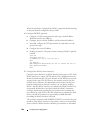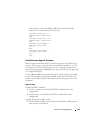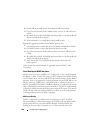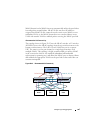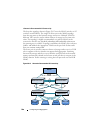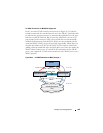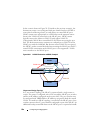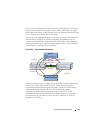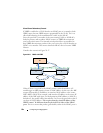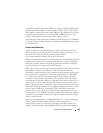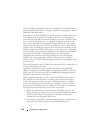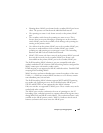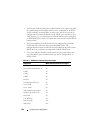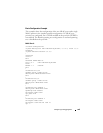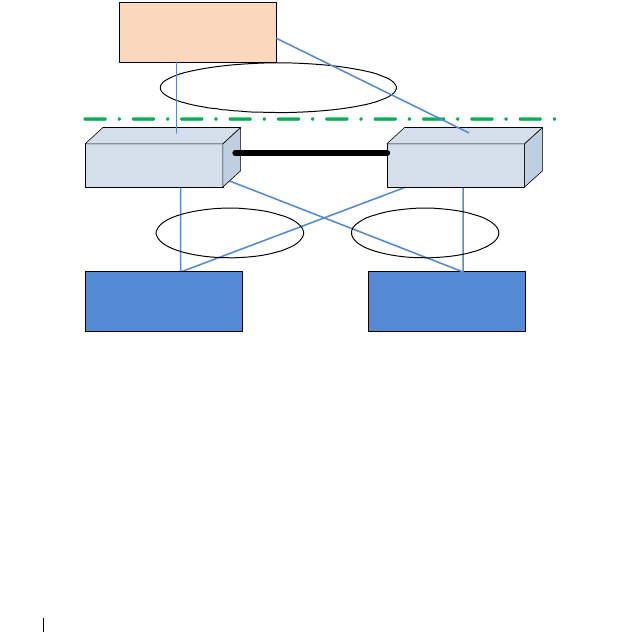
952 Configuring Link Aggregation
Virtual Router Redundancy Protocol
If VRRP is enabled on a VLAN that has an MLAG port as its member, both
VRRP routers become VRRP masters operationally in the VLAN. This is to
allow load balancing of the northbound L3 traffic on the MLAG.
Since the peer-link is a member of the same routing VLANs as all MLAGs,
both the primary and secondary MLAG routers see VRRP advertisements
sent by the other router. The internal switch packet filters are modified to
drop VRRP advertisement packets if they are received on a VLAN that has an
MLAG as its member. This ensures that both MLAG devices become VRRP
Masters.
Consider the scenario in Figure 28-17.
Figure 28-17. MLAG with VRRP
When L3 data is received by the MLAG primary switch destined to A, P
would trigger an ARP request to learn A's MAC address. In this case, the ARP
request originated by P would have its interface MAC address as the source
MAC address (MAC-P, for example) and interface IP address as the source IP
address. If the ARP reply from A, with destination MAC address as MAC-P, is
hashed to S, the packet will be forwarded by S to P over the peer-link so that P
can learn A's MAC address. This requires that the virtual IP address of the
VRRP “routers” be different from the physical IP of either of the MLAG
peers. This is to ensure that packets generated by either of the MLAG peers is
S2
A B
R1
P S



